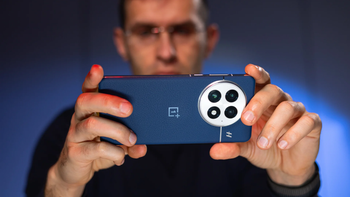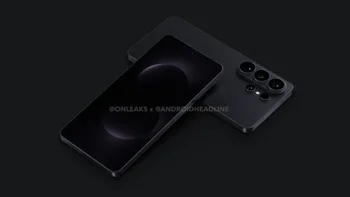Samsung Galaxy Alpha hands-on
Design
Design is the biggest focus of the Galaxy Alpha. The 4.7 incher marked the beginning of a new era for Samsung. The company that was once the very emanation of plastic gadgets, has turned to premium look and feel for the Alpha. The crux of that strategy is the new metal frame that is also in the Note 4: it’s elegant, sturdy, with meticulously chamfered edges. The buttons are also crafted brilliantly with attention to every little detail and with nice click and travel.
In terms of size, the Alpha is very compact and could even be used (with a little stretch) single-handedly, which is great.
Display
Samsung takes a page off the book of Apple rumors and has equipped the Galaxy Alpha with an iPhone 6-anticipated 4.7-inch display. We’re saying this because one of the two new iPhone 6 devices that Apple is expected to announce measures exactly 4.7 inches.
The Galaxy Alpha sports a 720 x 1280-pixel resolution, which works out to a pixel density of 312ppi. That’s definitely enough to have a fairly sharp experience, but pixel perfectionists will notice that if you stare up close you can actually some slight pixelization.
Interface
Android 4.4 KitKat with the TouchWiz UX is probably a better known version of Android than the stock version of the operating system that Google preaches. After all, Samsung sells the majority of Android devices out there.
The Alpha is no exception, it’s got the TouchWiz-infused variety of Android, with colorful icons, wallpapers, and it’s full-packed with features big and small in a typical Samsung manner. Some like it, some don’t, but at the end of the day the TouchWiz functionality remains its biggest advantage, and its slight but consistent across apps lag - a downside.
Processor and Memory
The Galaxy Alpha sports an Exynos 5 octa-core processor pushed to clock speeds of up to 1.8GHz and running alongside 2GB of RAM. It’s a fairly fast chip that performs admirably, and makes the Galaxy Alpha look good not only on the outside, but on the inside as well.
Internal storage comes in at the quite plentiful 32GB, but in a typical Apple-rivalry fashion, Samsung has decided to skip the microSD card slot, so you cannot expand on that initial allowance.
Camera
Samsung has equipped the Galaxy Alpha with a 12-megapixel CMOS image sensor of its own making with the ISOCELL technology and a native 16:9 aspect ratio.
ISOCELL is a technology that took years in development and it made a debut in the Samsung Galaxy S5 on a 16-megapixel Samsung sensor. Now, in the Galaxy Alpha we’re looking at some of the same features: ISOCELL (but on a 12-megapixel scale, and unknown sensor size) and phase-detection auto-focus.
In its official blog, Samsung promises that images taken on the Galaxy Alpha will come out “sharper than ever with natural colors.” Skipping the PR talk, though, we should say that ISOCELL brings a couple of important advantages over non-isolated photo cells used in traditional BSI sensors: first, crosstalk is reduced from 19% to 12.5% in ISOCELL, next, luminance signal to noise ratio improved from 150 lux to 105 lux, and finally, full well capacity increased from 5,000e- to 6,200e-.
Those are all the technical details, but they would not matter if the camera did not perform well.
Expectations
The Samsung Galaxy Alpha is definitely an impressive piece of technology with reasonable size, great looks, and all it takes to capture a loyal following. Except that it won’t be launched on the same massive scale as most flagship phones of the company. It will instead arrive to only limited markets and it is telling that Russia will be one of the biggest launchpads for the gadgest. For all else, though, the Alpha is a premium looking powerful gadget that signals about the beginning of new times in tech.

Follow us on Google News














Things that are NOT allowed:
To help keep our community safe and free from spam, we apply temporary limits to newly created accounts: